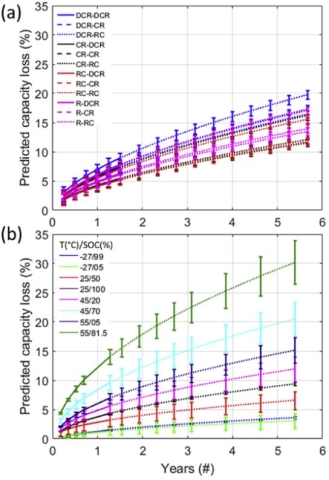
The idea of electric vehicles serving as a part of a larger, transactive grid has held enormous appeal among researchers and thought leaders for years. The concept is simple: when the grid has major demands, EV owners can choose to sell electricity stored in their batteries to the system by way of their household or workplace charging stations. This sort of flexibility may someday eliminate the need for expensive peaking power plants or large battery arrays that would otherwise fill this role (not to mention help EV owners pay off their vehicles). However, a new study by a team at the Hawaii Natural Energy Institute has cast some doubts on this strategy, claiming the additional cycling of EV batteries could reduce their useful life to under 5 years if those vehicles are used extensively in vehicle-to-grid (V2G) activities. It’s worth noting that it is both early days in this field of research and Tesla (to name one example) has claimed huge breakthroughs in battery lifetime recently. But this study nevertheless underscores both the complexity and potential unintended impacts of developing an advanced V2G infrastructure.
